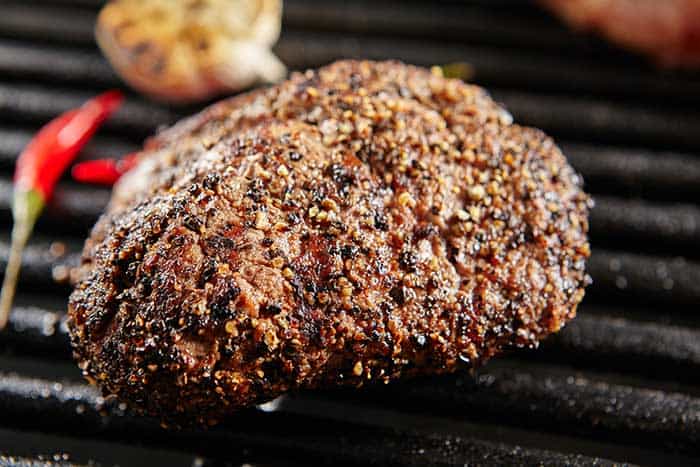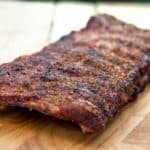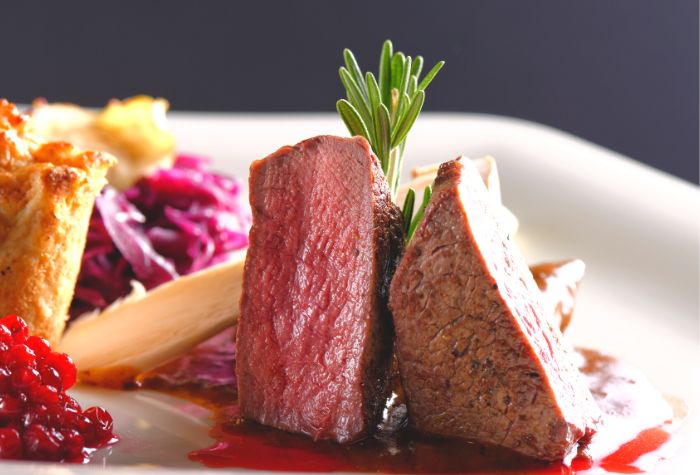The best smoked wild game recipes, from venison to wild boar. Discover your new favorite barbecue meat.

If you’re looking to serve something different at your next barbecue, try smoking some game. Whether you catch it yourself or get it from a trusted hunter, the earthy flavors of wild game are enhanced by smoking.
Here are a few recipes to keep in mind for after your next hunting trip.
Venison Ribs

Venison ribs come from deer, which is abundant in most of the United States and Canada. During deer season, venison ribs should be easy enough to find. Although the ribs are often discarded in favor of juicier cuts, this cut tastes delicious once it’s been smoked.
Venison ribs can be tough but tender once they’ve been cooked long enough. To prepare smoked venison ribs, first cut the ribs down to a manageable size. Then, trim the excess fat and membrane. You should brine the ribs overnight and then cover them in a simple dry rub to add flavor. The meat is lean, so you want to get plenty of flavor on the ribs. Finally, smoke over indirect heat.
Elk Roast

Elk is a larger species of deer that is common throughout the Rocky Mountains. Many hunters prize elk meat because it has a similarly rich, mild taste to beef, making it the perfect game for picky eaters. Elk roast can describe several tender cuts of elk meat, including top sirloin, top round, and tri-tip.
To smoke elk roast, prepare it with a dry brine and dry rub. You can use your choice of seasoning, but some of the most popular ones are garlic powder, black pepper, and paprika. Then, smoke the elk for about an hour per pound of meat.
Pheasant

Pheasant is a species of wild bird common throughout North America. Besides its impressive plumage, the bird is also prized for its aromatic meat. If you want a less gamey bird, you can buy pheasant raised in captivity from specialty farms, but purists prefer the strong taste of wild pheasant.
The best way to prepare smoked pheasant is to treat it similarly to a whole roast chicken. Prepare the bird by brining it in a salt and brown sugar mixture. The brine is crucial because it helps tenderize the meat. Then, smoke pheasants, basting regularly, until the birds reach a temperature of 165 degrees Fahrenheit.
Wild Boar

Wild boar is one of the most prized varieties of game because of its rich taste. It does not taste rangey like most game or even like pork, which comes from its close relative, the domestic pig. Instead, it has a nutty, robust flavor that is only enhanced by smoking it.
You can smoke almost any part of the wild boar. Two cuts that many hunters recommend are the shoulder roast or the ham. Prep the boar by marinating it in a liquid of your choice (this can be as simple as a store-bought vinaigrette or a homemade beer-based marinade), and then smoke it for up to four hours.
Bison

Although hunting bison without a permit is illegal, you can get bison meat from specialty butchers, ranches, or online stores. Instead of tasting gamey, bison tastes lighter and sweeter than beef, which is why many people prize this meat.
You can smoke many different cuts of bison, just like you would for beef. Some choice cuts include bison ribs, chuck roast, and even brisket. Bison is a very lean type of meat, so be sure to impart plenty of flavor before smoking it in the form of marinades, dry rubs, and brines.
We recommend our smoked bison roast recipe. We use boneless bison chuck because of its tough muscle fibers and rich, earthy taste. Prepare it with a quick coffee dry rub and smoke at 250°F (120°C) for three or four hours for the best results.
Duck

You can prepare wild duck in many different ways, including by smoking the meat. Duck meat has a very assertive flavor—nothing like bland chicken. It is vibrant and juicy, almost like red meat. The high fat content and thick skin mean that the duck stays flavorful and succulent during cooking. Smoking the duck is a great way to prepare this animal because the fat absorbs all the flavor.
To smoke wild duck, choose a plucked bird instead of a skinned one because the skin helps you preserve the flavor. Since wild duck is leaner than domesticated ones, brine the bird before smoking it to help the meat stay tender.
Goose

Goose is another type of wild poultry that tastes well when smoked. You can smoke the whole bird or just a specific cut, such as the breast. However, be careful when smoking a goose that the bird has enough fat. Certain species, such as snow geese, are too lean to retain any flavor after smoking.
Prepare goose with a simple brine that contains salt, peppercorns, onion powder, garlic powder, and seasonings of your choice. Then, smoke until the meat reaches an internal temperature of 150 degrees Fahrenheit.
Cornish Game Hen

Cornish game hen is a type of small bird that usually weighs no more than two pounds. Most Cornish game hens that you find in the grocery store are not wild birds but rock Cornish hens bred for their meat. The meat is more tender and delicate than that of a chicken.
They are small, so smoked Cornish hens cook quickly, taking only about 40 minutes to cook. Be careful as you are smoking that you do not overcook the meat and lose its tenderness.
Rabbit

Wild rabbit has a gamey and pungent taste that is best enhanced by smoking it. You have a few different options for smoking rabbit. You can prepare it in a flavorful marinade (wine is a popular choice for a French-style dish) or coat the rabbit in a dry rub to mimic BBQ flavors.
For our smoked rabbit recipe, cook low and slow for three hours, turning it over halfway through for even cooking. Prepare with a quick garlic and oregano dry rub for the best balance of flavors.
Venison Roast

Venison roast is the cut of deer taken from the rump or the hindquarters of the deer. This area of the animal is full of muscle and sinew, making for a robust cut of meat. However, by smoking the meat or using any other preparation that cooks the roast for a long time, you tenderize it and bring out its flavor.
To prepare smoked venison roast, marinate it overnight to bring out the flavors. Then, smoke it until the meat reaches at least 130 degrees Fahrenheit (rare) or 145 degrees Fahrenheit for medium-cooked roast.








